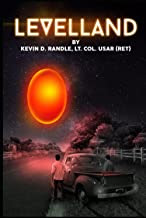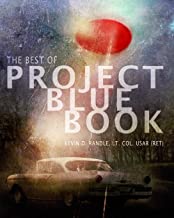It
is sort of an ongoing belief that astronomers don’t see UFOs… or as some of
those claiming this say, “Alien spacecraft.” Some astronomers have seen things
that could be classified as UFOs, meaning unidentified flying objects as
opposed to spacecraft. Clyde Tombaugh who discovered the now demoted planet
Pluto, had a sighting, but it was of rectangular lights passing overhead which
could have been some kind of spacecraft or might have been some misunderstood
natural phenomenon so strange that he had never seen anything like it. The
point here that could be debated was if Tombaugh was claiming to see something
alien. He did file a UFO report but that still is not the same as saying it was
an alien spacecraft.
In
working on another project, I was looking at the November 1959 issue of The A.P.R.O. Bulletin, and found, under
the “Recent Sightings” banner (page 10) the following:
Rio
de Janeiro, 13 July, 1959 (oh my lord the hated Bill Moore dating format that
might have contaminated the MJ-12 Eisenhower Briefing Document… You’re welcome
Stan...) – Three Brazilian astronomers followed, for twenty minutes, the
trajectory of a lighted circular object (the lights were green) which
occasionally emitted rays. From 2210 to 2230 [meaning 10:10 p.m. to 10:30 p.m.]
Professors Luiz Eduardo, Mario Ferreira, and Silvio Vaz watched it from the
Valondo Observatory of the University of Brazil. It evolved from the
constellation of Alfa to the constellation of Paon after which it entered the
southern triangle of the Southern Cross to finally disappear on the horizon.
The trajectory was the arc of a circle. The mysterious object did not revolve
about itself. According to the astronomers, it could easily be seen with the
naked eye, being about twice the size of Venus. “I am persuaded that it was a
Flying Saucer,” declared Professor Eduardo.
Okay,
I know what you all are thinking because I’m thinking the same thing. But in
the world of the Internet, I could check out some of this. I found a listing
for Luiz Eduardo de Silva Machado (1927 – 1992) who could be the man mentioned
in the report. He is listed as an astronomer who discovered asteroids, among
other things. I found a couple of listings for the others but I’m not sure they
are the right guys.
And,
of course, there is a listing for the observatory. This tells me only that one
of the men and the observatory wasn’t invented. This brief fact check was
something that couldn’t be done when the story first appeared in 1959… and
frankly, it is not all that great today.
However,
if accurate, and I have no reason to doubt it at this point, it is just another
sighting by astronomers. Instead of calling it a UFO, they gave a description
and called it a flying saucer. It is the story of astronomers seeing a
spaceship… and yes, I had to go to Brazil and 1959 to find this, but then I
wasn’t really looking for it. I just stumbled across it and thought I would
mention it.





















8 comments:
Frank Edwards slammed the claim that professional astronomers don't see UFOs.
I have a genuine question pertinent to the topic:
In a LIFE magazine article of April or May 1952 there was given a sighting by an astronomer who had his two daughters with him whilst driving through NM. He wanted to remain anonymous.
Years later I read that he was identified as Lincoln La Paz, the famous meteoricist at the Univ of NM, and very prominent during the 'green fireballs' episode. However, I have also read that the astronomer in question was Clyde Tombaugh who lived in NM and who had a later (1949) sighting as Kevin says.
My question is: who was the astronomer in the LIFE article? If it was indeed Tombaugh, why would he want his name withheld in one case but not the other, and if it was La Paz, why would he (a well known believer in UFOs and very co-operative in the official investigations of them) choose to be anonymous in a magazine article?
Astronomers don't see alien craft any more because we know they don't exist. This knowledge is so certain and unwavering, passed down from giggling supervisor to innocent student, that even if we were to observe an alien craft, our brains would immediately unsee it and slap us on the back for the head for daring to see things that don't exist.
Clyde Tombaugh was not the anonymous astronomer referred to in LIFE. I worked with him for many years & know he would have never remained anonymous about anything. Also, he didn't have 2 daughters.
The notion that a dearth of astronomers proves anything one way or another about UFOs is erroneous. Most astronomers are working in a tiny patch of sky at any one time, and are completely oblivious to anything going on elsewhere in the sky. Almost invariably, when an astronomer spots a UFO, it is under the same circumstances as anyone else: i.e., he was walking down the street, driving somewhere, working in the yard, carrying out the garbage, etc.
Tombaugh was a good example of that. His sighting occurred while he was relaxing in his backyard, hence had a huge field-of-view (incidentally, his wife saw it too). The same consideration was true in both of my sightings: in one case I was walking across a university campus, and in the other was working in a wheat field (both daylight sightings). In both cases I had a large FOV. However, in 20 yrs working as an astronomer, I never saw anything mysterious.
That's probably the main reason far more UFO's have been seen by pilots than astronomers.
All -
Here's the point that was apparently missed. The debunkers say that astronomers never see spacecraft. They say that astronomers see UFOs, which are not necessarily spacecraft. Here is a report, but astronomers, who say they saw a spacecraft as opposed to a UFO.
cda:
Tombaugh's sighting in the LIFE article is described in Incident #3 and he is not anonymous. La Paz's sighting north or Roswell 2 days after the big story of July 8, 1947, was Incident #2, and LaPaz was anonymous. (He was the astronomer with two daughters, not Tombaugh.)
Oddly La Paz is not anonymous as a witness to a green fireball, and he comments in the article on the differences between the green fireballs and ordinary meteor fireballs.
Percentages of astronomers admitting to seeing UFOs:
1. 5/45 in Hynek's 1952 survey of fellow professional astronomers (~10%)
2. 5% in Peter Sturrock's two large surveys in the 1970's of AIAA members and the American Astronomical Society. (Thus professional astronomers again.)
3. 24% in the Gelb/Hynek 1980 survey for CUFOS of amateur astronomers.
Amateur astronomers are much less likely than professionals to be looking at only a narrow part of the sky while observing, thus I suspect more likely to see something unusual.
In any case, professional and amateur astronomers certainly DO see and report UFOs, amateurs possibly much more than the general public at large. (Fairly recent polls in the U.S. in Britain had 8% of the general population saying they thought they had seen a UFO.)
Another point is that in Sturrock's second poll of the AAS members, only 2 of 1300 respondents agreed to NOT be anonymous fearing adverse consequences to the careers of going public, according to Sturrock. So there definitely is a stigma attached to the subject amongst astronomers of being public with their sightings. However, a very high percentage of respondents in both Sturrock's surveys expressed a great interest in the subject matter and a willingness to contribute to further research. Interest in the subject also correlated directly with the respondents' familiarity with the subject matter. Those who had read and studied it the least tended to be more derisive and skeptical.
As a child I was fascinated by the skies, stars, planets, the moon, and, yes, aircraft and rockets. I'll never forget the thrill of seeing the moons of Jupiter through a tiny telescope for the first time. This lasted until I graduated high school. I still scan the skies, but for different reasons :)
I think most astronomers start out this way, but the tech has changed dramatically since then. Now, one can do astronomy from ones home office, thousands of miles from the telescope. Large telescopes no longer accommodate visual observation; they have sensors instead. Comet hunters may have a better chance, but aren't they mostly amateurs?
IRRC, most observations are long time exposures, further reducing the chance of evaluating a sighting.
Perhaps AA can expand on this.
It would be cool if an unknown would hang around long enough for spectroscopic analysis.
I gotta go...
Aliens may also be of Machine intelligence or artificial life and as such not "organisms". Life as we know it and understand it is but one possibility.
Post a Comment